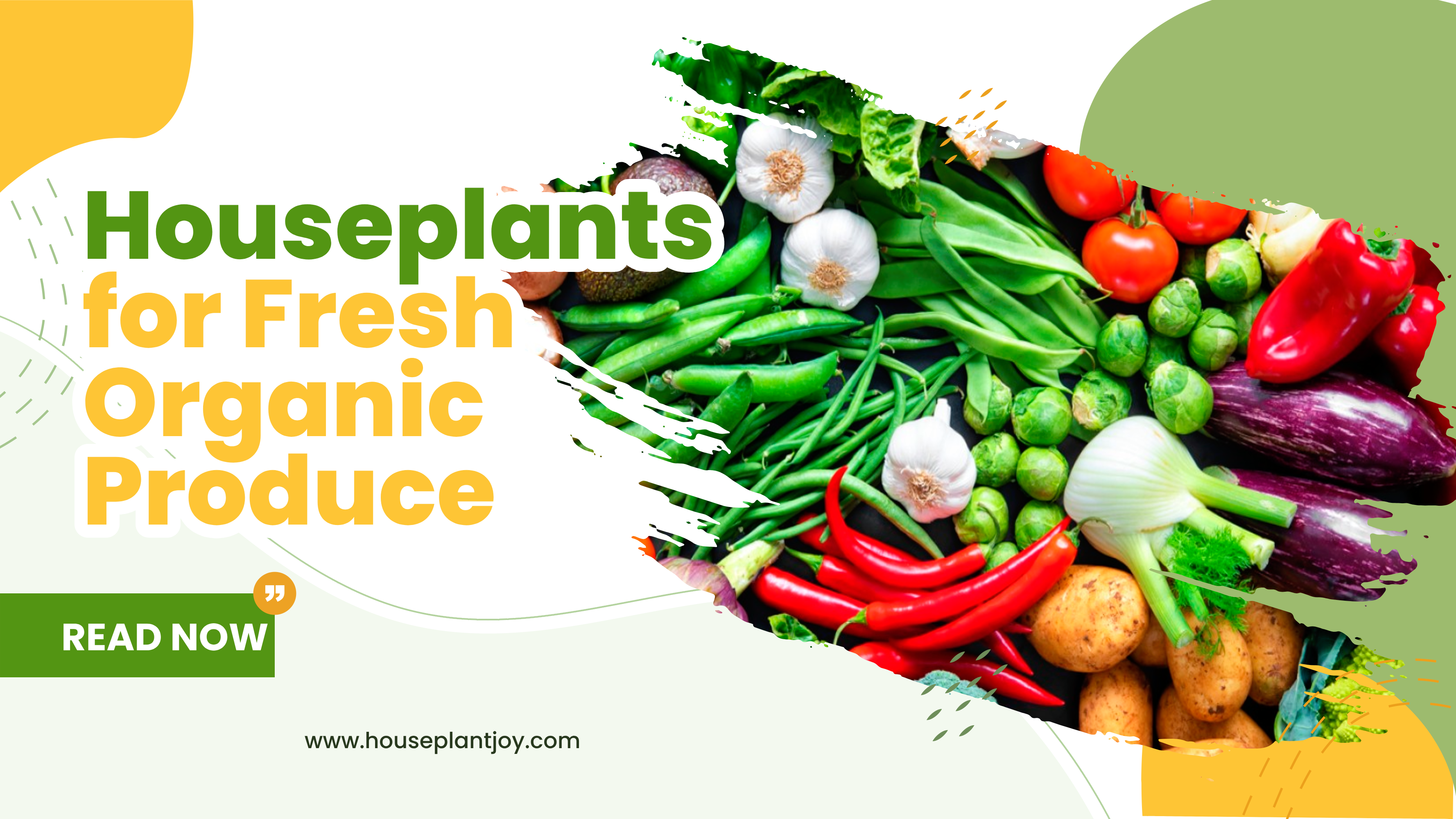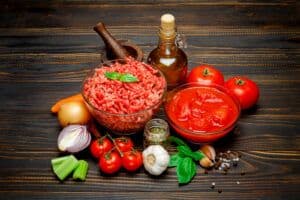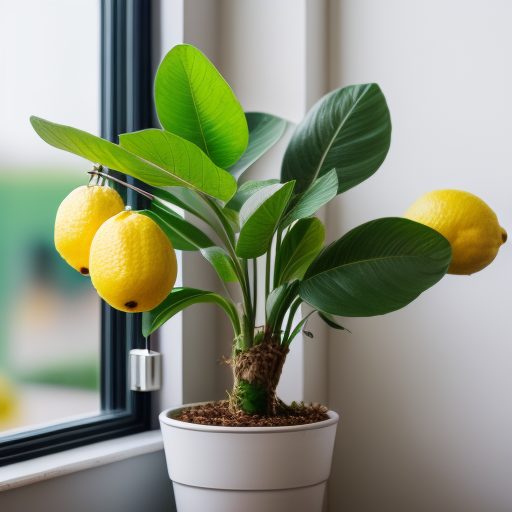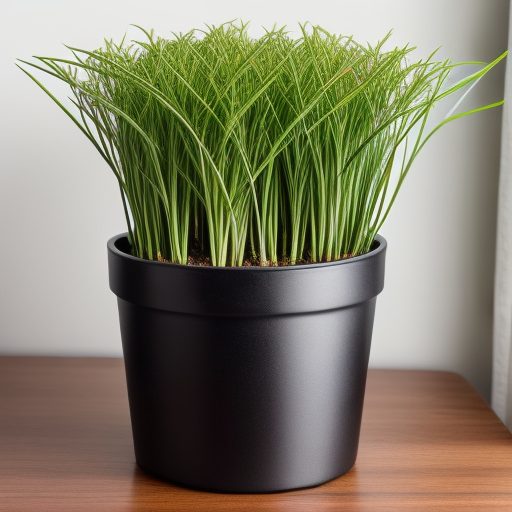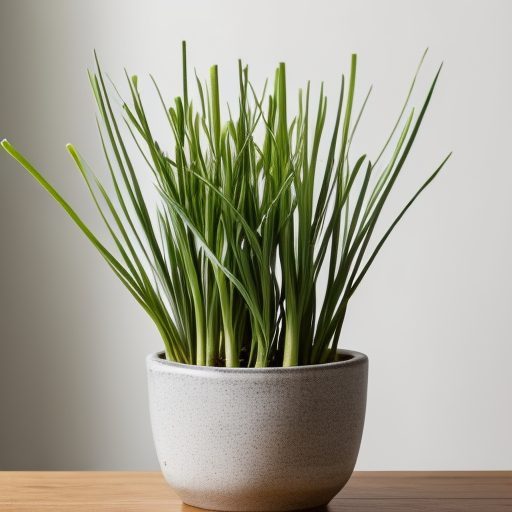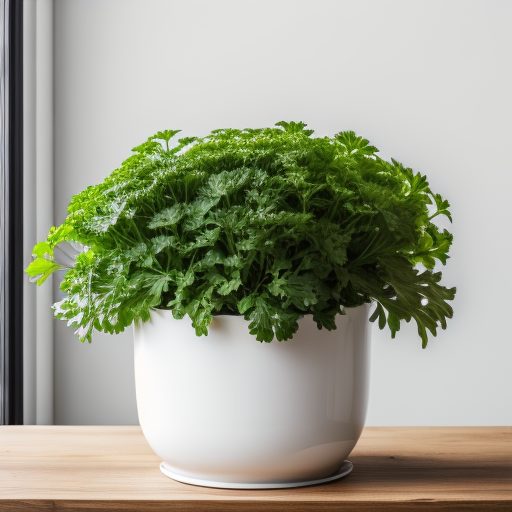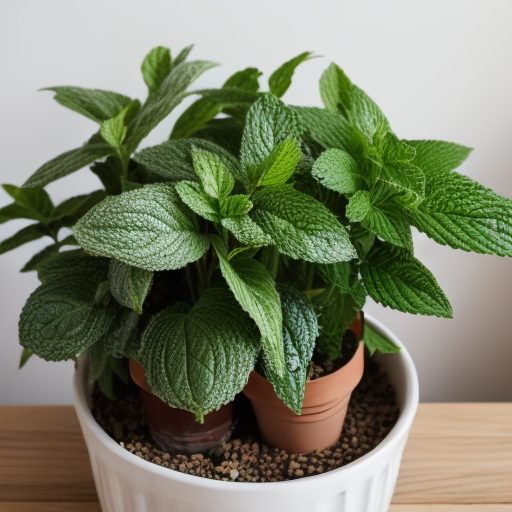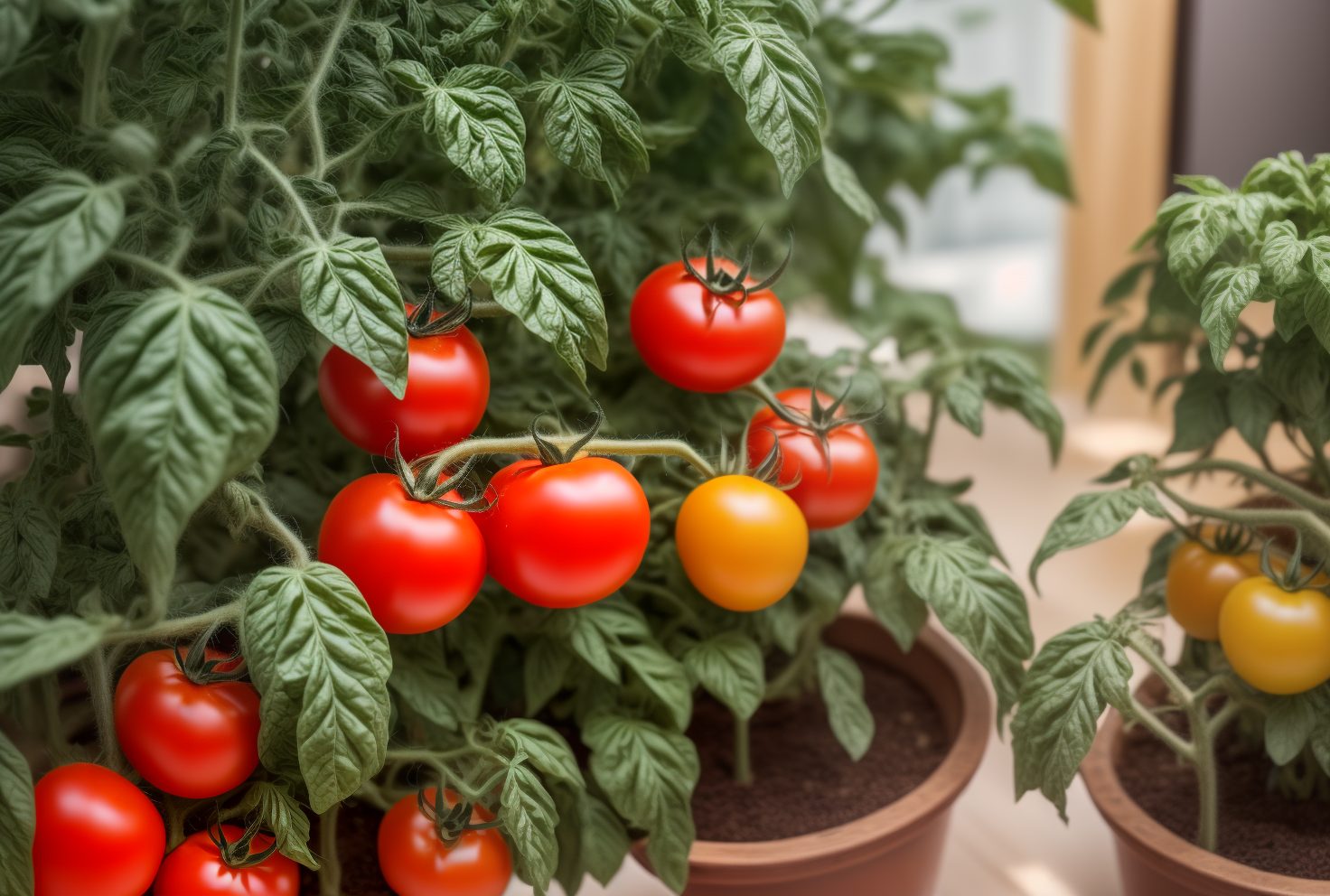HousePlantJoy is supported by our audience. When you purchase through one of our links, we may earn a small affiliate commission. As an Amazon Associate I earn from qualifying purchases. Your cost is not affected.
==================
In the age of conscious eating, the idea of cultivating houseplants for fresh, organic produce is taking root. We’re moving away from veggies laden with chemicals and racking up food miles. Growing our own food, even if it’s on a modest windowsill, is becoming a rewarding, eco-friendly choice.
But before you think you need a sprawling garden, think again. Houseplants offer a practical, space-saving, and delicious solution. In this article, we’ll explore the why and how of growing houseplants for fresh organic produce, from choosing the right plants for your tastes to making your green journey both satisfying and sustainable. Let’s dive into the world of houseplants for organic gardening and savor the flavors of homegrown goodness.
Why should you think about cultivating houseplants for fresh organic produce? Well, it’s the 21st century, and there’s a growing trend among people who are choosing to avoid vegetables grown with insecticides and pesticides. This shift is driven by concerns about the potential health risks associated with non-organic farming practices. Some studies have suggested a link between non-organic insecticides and health issues, including cancer. While ongoing debates and research continue to shed light on this issue, many individuals are opting for organic produce whenever they can.
Beyond the health aspect, there’s also the matter of the distance our grocery produce often travels. It’s challenging to assume that produce transported over long distances arrives as fresh as we’d like it to be.
Now, you might be wondering, what are the alternatives for those seeking a healthier route? Well, if you’re fortunate, you might live near a local organic farm that offers a variety of produce. However, not everyone has that privilege. Others might seek out a local farmers’ market with organic options, but these can also be limited in availability.
For those with a green thumb, there’s the option of maintaining a full-fledged kitchen garden, which can be a rewarding but ambitious endeavor. On the other hand, if you’re content with a more modest approach, you can choose to grow a handful of plants in small pots. Ultimately, the choice is entirely up to you and your preferences.
Houseplants for Fresh Organic Produce: Deciding Factors
When it comes to bringing houseplants into your life to grow fresh, organic produce, there are some important factors to think about.
First up, Your Taste Buds
Start by thinking about the kind of fresh organic produce that makes your mouth water. After all, why go through the trouble of growing something you won’t enjoy eating? With a whole array of options, it’s all about picking the plants that match your culinary cravings.
Next, the Practical Side
Now, not all plants are created equal when it comes to indoor or patio life. Some are like green-thumbed champs for these settings, while others might throw you a curveball. Consider the potential for success. Whether it’s a robust basil plant or those exotic mushrooms you’ve got your eye on, you want your efforts to pay off.
Maintenance Mojo
Here’s where you need to weigh the effort. Some plants can be a bit high-maintenance, demanding your time and care. Others, well, they practically take care of themselves. What you consider as high-maintenance might be someone else’s idea of a rewarding challenge.
Penny-Wise Solutions
Think about the pricey stuff at the supermarket. Some of those things can make your wallet wince. In those situations, growing them at home becomes a clever money-saving move. Houseplants can be your money-saving, pocket-friendly heroes.
Don’t Overgrow Your Space
Remember, your home isn’t a full-blown farm. So, when you’re picking plants, consider the space they’ll take and the yield they’ll give. You don’t want your houseplants crowding your living space. So, it’s all about being practical and choosing the right plants for your needs and your space.
“Your indoor garden is a canvas of flavor and practicality, where your taste buds paint the picture, maintenance sets the stage, and savings bloom. Choose your houseplants wisely, and let them be your pocket-friendly heroes in a space that’s just right.”
Houseplants for Organic Gardening
Growing houseplants for organic gardening can be a rewarding and sustainable way to have fresh produce at home. The list you’ve provided includes some popular and relatively easy-to-grow options for indoor gardening. Here’s a closer look at each of these houseplants:
Lemons
Lemon plants are a fantastic choice for indoor gardening. They require a large pot due to their size and produce fragrant and tangy fruit. Lemons are versatile and can be used for seasoning and in various culinary applications. They are not very high-maintenance but need regular watering and ample sunlight.
Chives
Chives are a great addition to your indoor garden. They are low-maintenance and add flavor to many dishes. Chives do well in smaller pots but need a humid environment, so having a nearby water source can help maintain their moisture levels.
Scallions
Scallions are easy to grow and provide a fresh supply of green onions. They require well-lit conditions, so placing them on a sunny windowsill is ideal. Scallions have a short growth cycle, so you can enjoy fresh produce in just a couple of months.
Parsley
Parsley is a popular herb used for garnishing and cooking. It’s space-efficient and can be grown alongside other herbs in a container. It requires regular watering and occasional fertilization to thrive.
Mint
Mint is a fragrant and versatile herb that can be grown in a small pot or even a water bottle. Mint plants need consistent watering but are evergreen, providing fresh leaves throughout the year. Be cautious when harvesting to avoid disturbing their root system.
Tomatoes
While tomatoes are typically grown outdoors, you can cultivate micro-sized varieties indoors. These tomatoes may not yield as much as their outdoor counterparts and are not evergreen, but they can still be a valuable addition to your indoor garden. Ensure they receive daily watering, but be careful not to overwater.
When growing houseplants for organic gardening, it’s essential to use organic soil, avoid synthetic pesticides or fertilizers, and provide good air circulation. You can also explore other houseplants, like herbs, peppers, or even dwarf fruit trees, depending on your space and preferences. Organic gardening at home is a sustainable way to have fresh produce readily available, and with proper care, you can enjoy a bountiful harvest.
Discover this video that harmonizes with the article, offering additional inspiration for growing your fresh produce indoors. It’s a great companion to the article and can provide more insights into your indoor gardening journey.
Credit: @TheRipeTomatoFarms
Houseplants for Fresh Organic Produce: Growing and Caring for Your Indoor Garden
Now, let’s delve into the specifics of growing and caring for the houseplants we’ve introduced for your indoor garden. Each plant has its unique requirements, and by understanding how to nurture them, you can ensure a bountiful harvest of fresh, organic produce right in your own home.
Lemons:
- Light: Lemon plants thrive in bright, indirect sunlight. Place them near a sunny window, and make sure they receive at least 8 hours of sunlight daily.
- Water: Keep the soil consistently moist but not waterlogged. Water when the top inch of the soil feels dry.
- Fertilization: Feed your lemon plant with a balanced fertilizer every 4-6 weeks during the growing season (spring and summer).
- Pruning: Prune your lemon plant to maintain its shape and encourage new growth.
Chives:
- Light: Chives do well in partial to full sunlight. Place them near a window with indirect light.
- Water: Keep the soil evenly moist but not waterlogged. Water when the top inch of soil feels dry.
- Fertilization: Fertilize chives with a balanced, water-soluble fertilizer every 4-6 weeks during the growing season.
- Pruning: Regularly trim chives to encourage fresh growth and prevent flowering, which can make the leaves tougher.
Scallions:
- Light: Scallions need plenty of sunlight, so a sunny windowsill is ideal.
- Water: Keep the soil consistently moist. Ensure good drainage to prevent waterlogged roots.
- Fertilization: Use a balanced, water-soluble fertilizer every 6-8 weeks during the growing season.
Parsley:
- Light: Parsley enjoys bright, indirect sunlight. It can thrive indoors with the right light conditions.
- Water: Keep the soil consistently moist but not soggy. Water when the top inch of soil is dry.
- Fertilization: Fertilize parsley every 4-6 weeks with a balanced, water-soluble fertilizer.
Mint:
- Light: Mint needs at least 4-6 hours of indirect sunlight each day. It can also grow under fluorescent lights.
- Water: Keep the soil consistently moist but not waterlogged. Water when the top inch of soil feels dry.
- Fertilization: Feed mint with a balanced, water-soluble fertilizer every 4-6 weeks during the growing season.
Tomatoes:
- Light: Tomatoes require a lot of direct sunlight, ideally 6-8 hours daily. Place them by a south-facing window or use grow lights.
- Water: Keep the soil consistently moist, but don’t let it become waterlogged. Water deeply when the top inch of soil is dry.
- Fertilization: Use a balanced, water-soluble tomato fertilizer every 2-4 weeks during the growing season.
Remember to monitor the specific needs of each plant, adjust care based on the environment, and always check the soil’s moisture level before watering to ensure the best results.
“From lemons that beam in sunlight’s grace, To parsley’s delicate, green embrace, In your indoor garden, each has its place, Caring for them with love, your homegrown space.”
Harvesting Homegrown Happiness
As we wrap up our journey through the world of houseplants for organic gardening, it’s clear that we’ve touched upon something more than just plants and produce. What we’ve sowed here goes beyond the boundaries of pots and windowsills. It’s a seed of change in the way we connect with our food and our environment.
In this exploration of fresh, organic produce, we’ve tasted the joys of cultivating our own culinary delights. We’ve considered the practicality of space and effort, and we’ve met some charming green companions, from lemons to mint. But perhaps the most significant harvest is the awareness that we can be active participants in our food’s journey from seed to plate. It’s a connection to nature and nourishment that’s deeply satisfying and, quite simply, delicious.
Now, as you continue to nurture your houseplants and explore the world of organic gardening, we invite you to join our community at “HousePlantJoy.” There, you’ll find a wealth of tips, stories, and inspiration for your journey. Let’s keep growing together, embracing a more mindful, healthier, and greener way of life, one plant at a time.
Frequently Asked Questions
Can I really grow lemons indoors, and how big of a pot do I need?
Yes, you can grow lemons indoors. Lemon plants make excellent indoor additions but require a decent-sized pot to accommodate their growth. A pot with a diameter of at least 12-15 inches is ideal, allowing room for the roots to spread and support the growth of this fragrant citrus fruit.
Are these houseplants suitable for beginners in gardening?
Absolutely! Many of the houseplants mentioned, like chives, scallions, and mint, are relatively easy to grow and make perfect choices for beginners. They don’t demand an expert green thumb and can thrive with proper care and attention.
Do I need a garden to grow tomatoes, or can I cultivate them indoors too?
While tomatoes are typically grown outdoors, there are dwarf varieties that can be cultivated indoors. These compact tomato plants are well-suited for containers and indoor spaces, making it possible to enjoy fresh tomatoes even if you don’t have a garden.
Can I use regular potting soil for these houseplants, or do I need something special for organic gardening?
For organic gardening, it’s best to use organic potting soil. Organic soil is free from synthetic chemicals and pesticides, ensuring that your houseplants are truly organic. Look for potting mix labeled as organic or suitable for organic gardening to create the best environment for your indoor crops.
Join Our Green Community on Social Media!
Explore vibrant visuals on Instagram, discover product reviews, and connect with fellow plant enthusiasts. Dive into a world of fresh, organic produce and thriving houseplants.
For a daily dose of green inspiration, follow us on Facebook. You’ll find engaging content and connect with like-minded plant lovers.
Looking for innovative ideas and tips? Check out our boards on Pinterest for a wealth of creative gardening solutions.
Stay in the loop with the latest updates and community discussions on Twitter. Your journey to a greener, healthier lifestyle begins here. Join us today!

